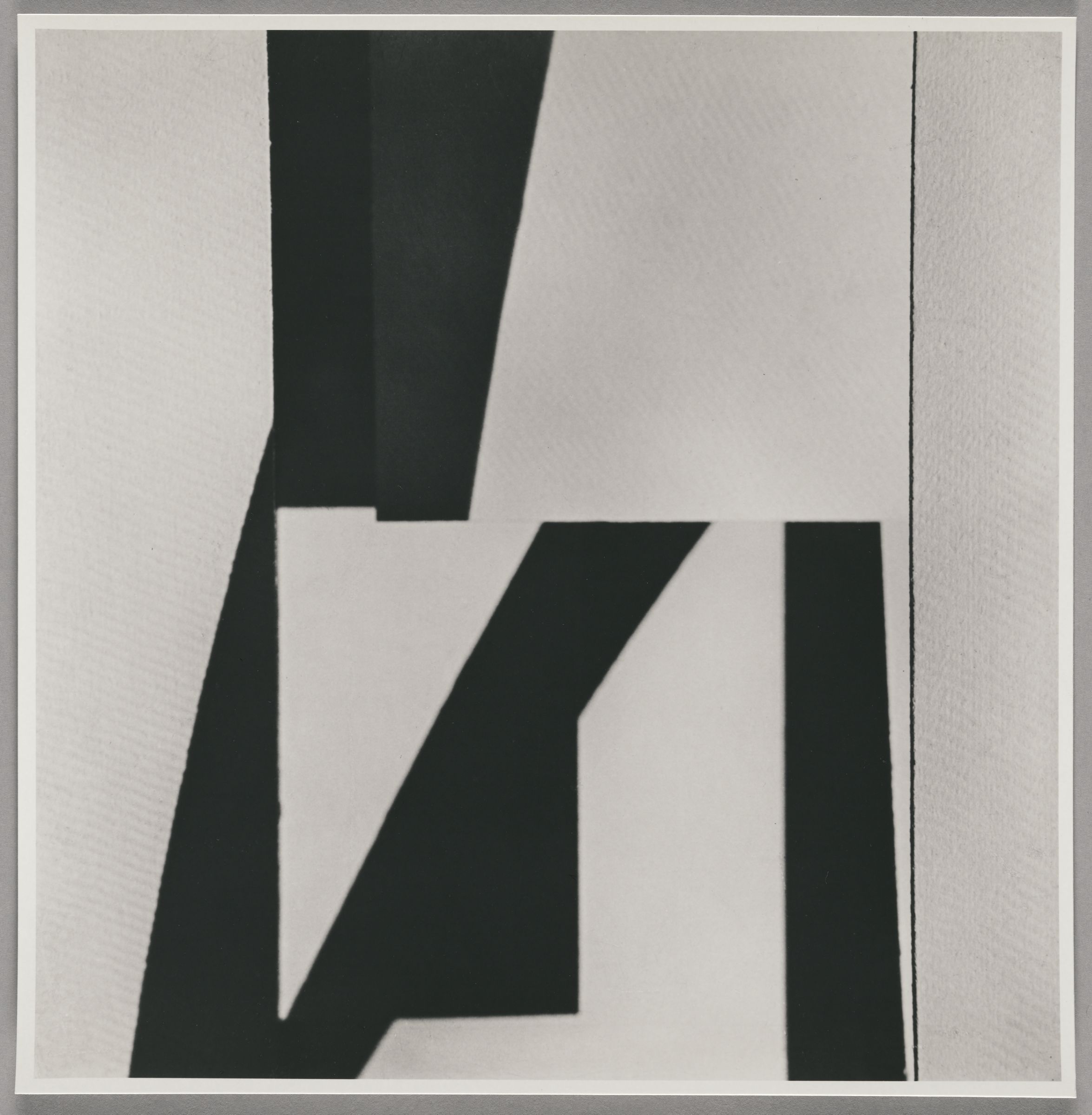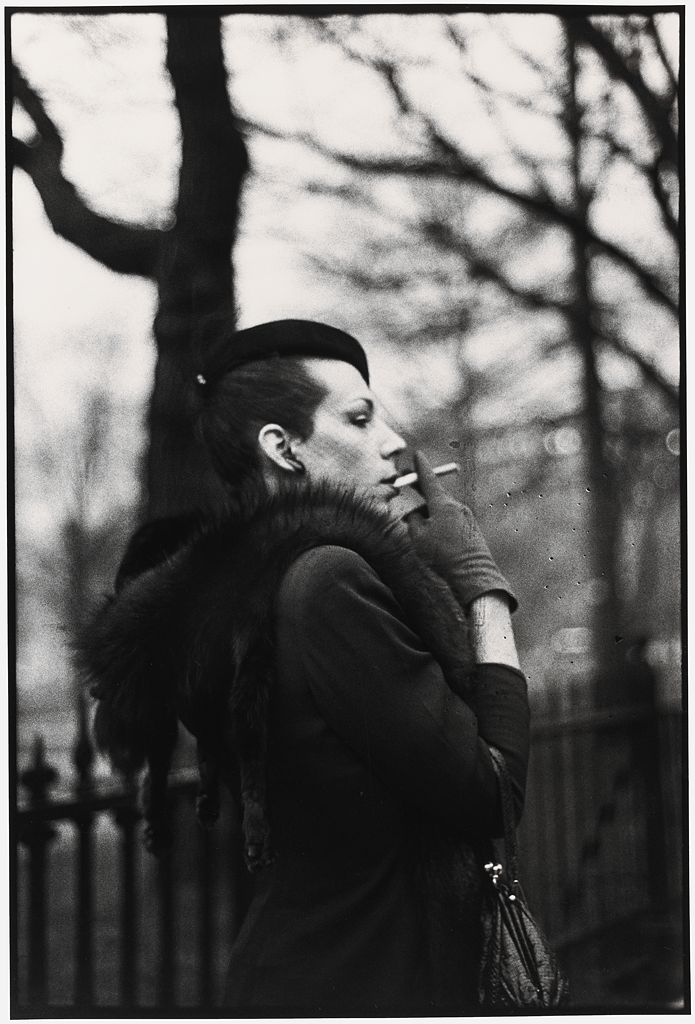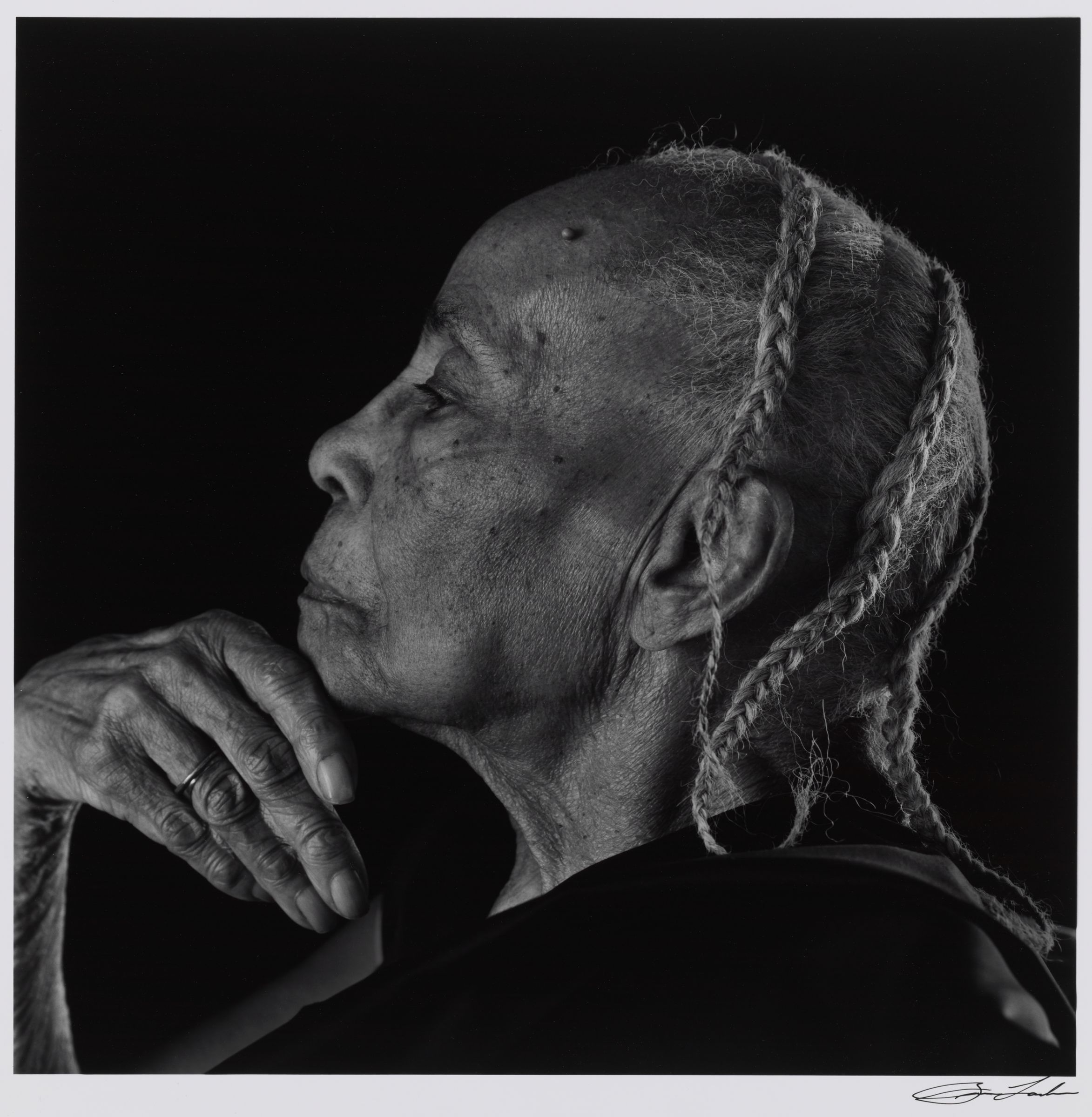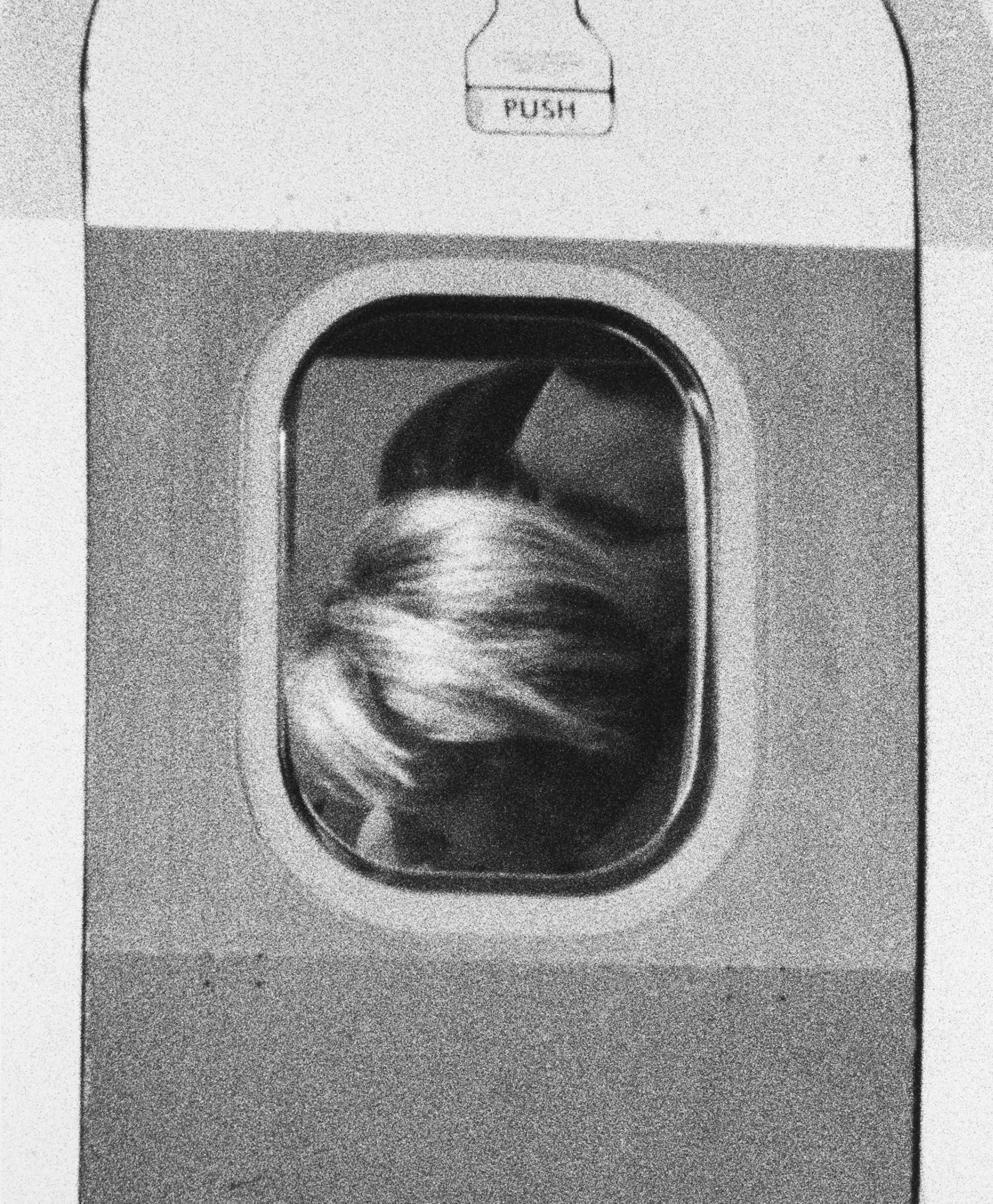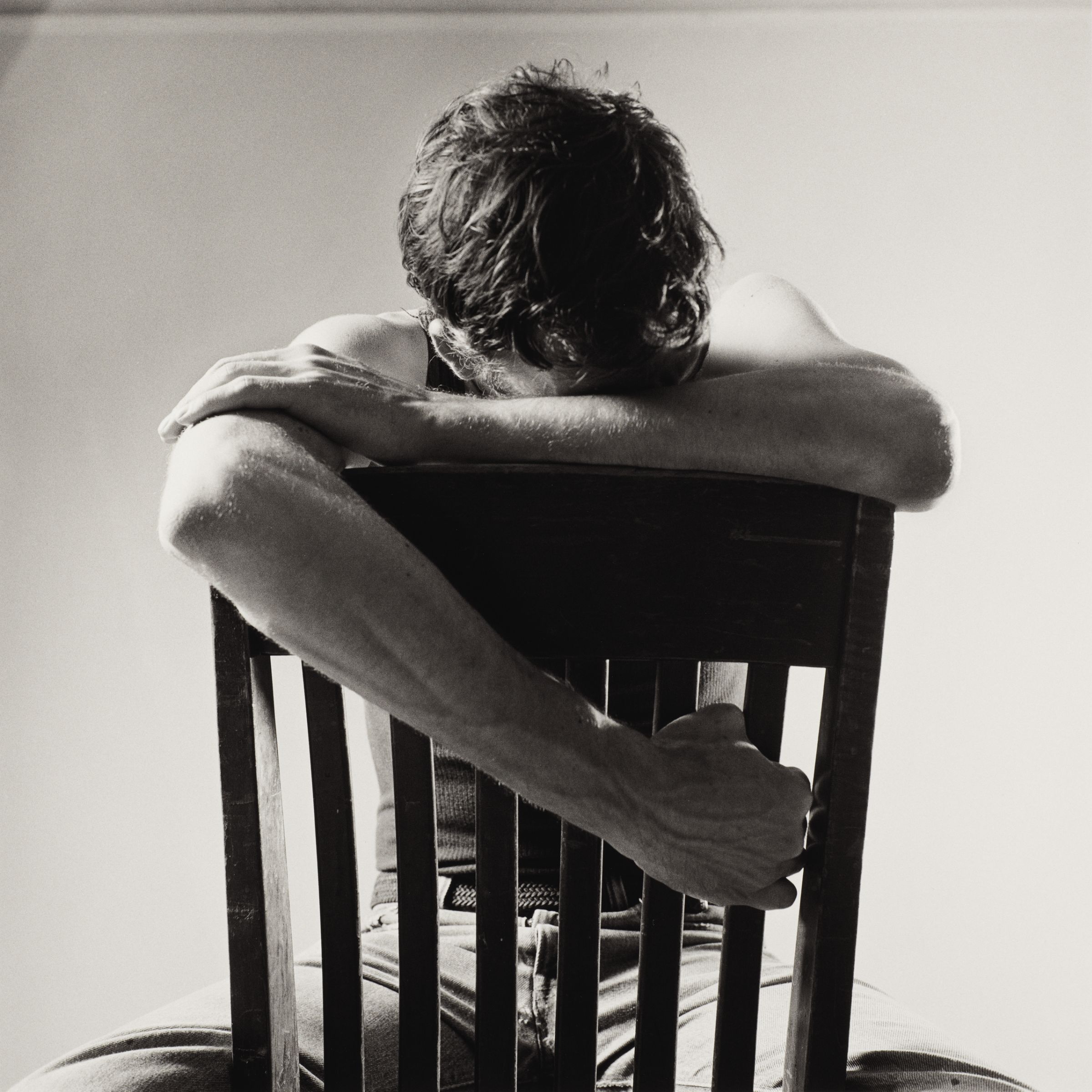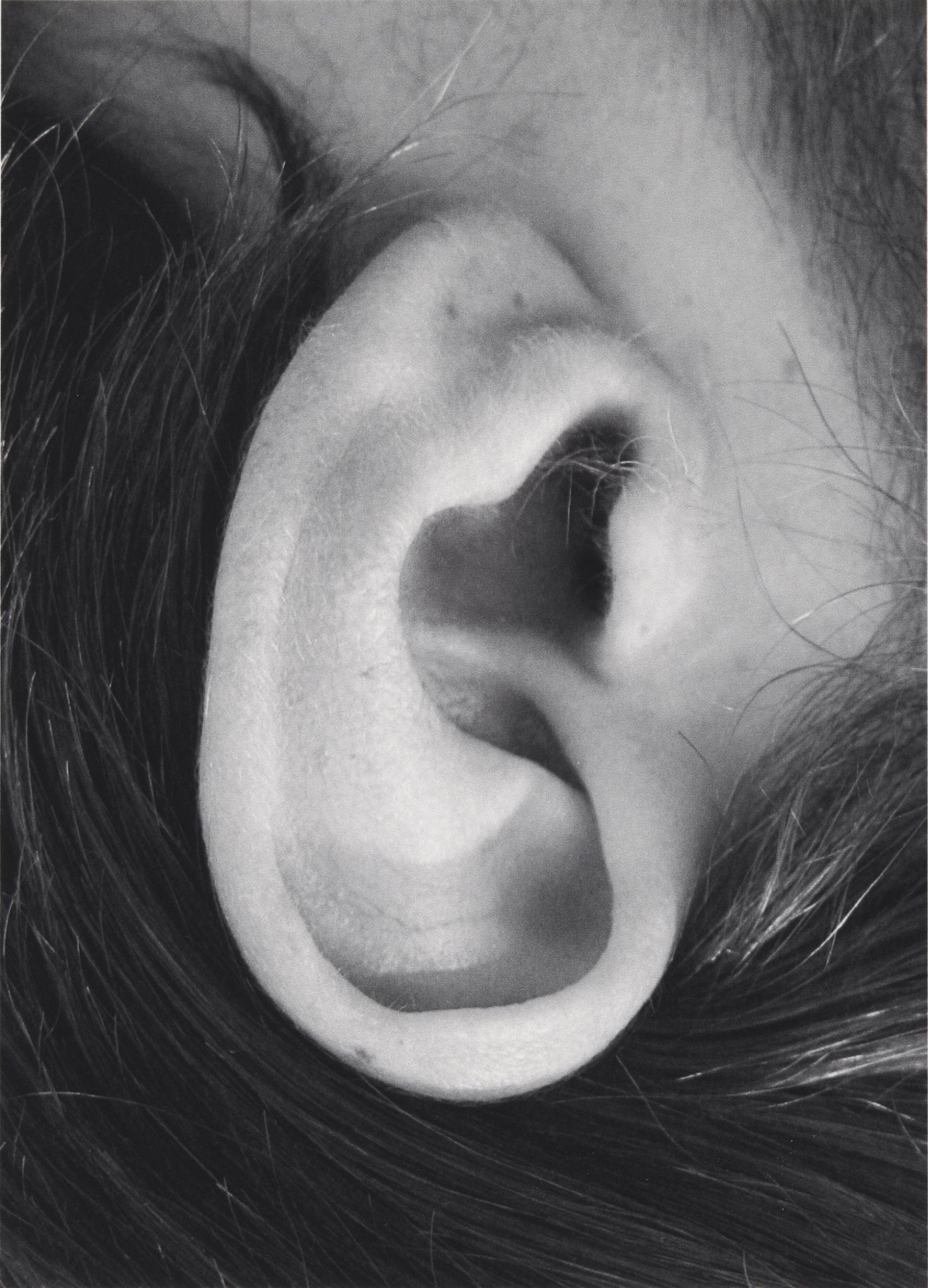Just as Gary Schneider was beginning his career and Lisette Model was reaching the end of hers, the two artists became collaborators. Model, a world-famous photographer and teacher, hired Schneider in 1982 to reprint her photograph Fashion Show, Hotel Pierre (1940–46).
In this image, the viewer’s eye is led back and forth between the two female subjects, thanks to the artful manipulation of light and dark tones. While Schneider made this striking version for Model, she in turn provided him with important lessons in how to navigate his career as a printer.
“She gave me a language” for communicating with clients, said Schneider, who, with his partner John Erdman, had only recently founded their Manhattan-based printing lab when Model came to them. “Lisette would look at a set of prints, choose the one that she considered to be closest [to her desired outcome], and then start talking about” how the printer could better achieve the effect through various darkroom techniques. “Because of her, when I was [later] talking to artists about their prints, I could verbalize what they needed or were thinking.”
Model is just one of the many major photographers whose work Schneider printed over the lab’s 20-plus years in operation. (The business officially wound down in the early 2000s, after redevelopment forced them from their longtime space in the East Village.) Early on, Schneider and Erdman adopted the practice of retaining a “printer’s proof”—that is, a photograph set aside from each edition they printed for a client. These prints grew into an extraordinary collection of nearly 450 photographs taken by the artists, photojournalists, and fashion photographers who were at the center of New York’s cultural milieu in the 1980s, ’90s, and early 2000s. The collection includes photographs by Richard Avedon, James Casebere, Robert Gober, Nan Goldin, Peter Hujar, Gilles Peress, David Wojnarowicz, and others.
The Schneider/Erdman Printer’s Proof Collection was acquired by the Harvard Art Museums as a two-part combined gift and purchase (in 2011 and 2016), with support from the Margaret Fisher Fund. Schneider and Erdman subsequently gifted the museums a collection of archival material and artist tools, including test prints, glass plate negatives, and studio records, as well as works from their personal collection of photographs.
The upcoming exhibition Analog Culture: Printer’s Proofs from the Schneider/Erdman Photography Lab, 1981–2001 (May 19–August 12, 2018) will be the first public display of objects from this remarkable collection. Approximately 90 printer’s proofs will be on view, together with experimental prints and other selected material from the supporting archival collections.
“This is an exciting opportunity to take an unprecedented look at collaborations between photographers and printers,” said Jennifer Quick, the John R. and Barbara Robinson Family Associate Research Curator in Photography, who curated Analog Culture. “Through this collection, we’re looking closely at both the technical aspects of darkroom photography as well as the bigger histories that this collection documents.” (Click on the video below to watch Quick and Schneider briefly discuss the collection and exhibition.)
Historical Significance
Even though many of the photographs in the exhibition were made just a few decades ago, the processes used in making them are no longer common knowledge. Given the rapid development of digital photography technology, many current Harvard students have never been inside a darkroom, the traditional space for developing photographs. For those more used to taking photos on a smartphone, Analog Culture provides an opportunity to learn about the materials and methods of non-digital photography. The exhibition and its related publication “get really granular, looking at how a photograph is made—how it’s manipulated in a darkroom and what techniques are used,” said Quick.
